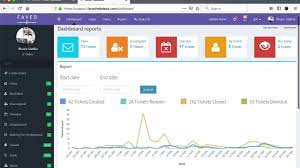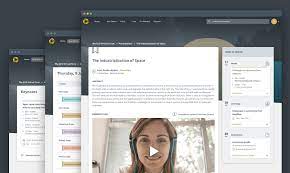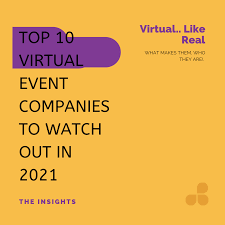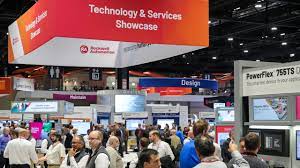Title: Top 10 Virtual Event Platforms: Revolutionizing the Way We Connect
Introduction:
In today’s digital age, virtual events have become a powerful tool for businesses, organizations, and individuals to connect with their audiences. With the global shift towards remote work and social distancing measures, virtual event platforms have gained significant popularity. These platforms offer innovative features that enable seamless online interactions, networking opportunities, and engaging experiences. In this article, we will explore the top 10 virtual event platforms that are revolutionizing the way we connect.
Zoom Events:
Zoom Events is a comprehensive platform that combines video conferencing capabilities with virtual event management tools. It offers features like breakout rooms, live polling, interactive Q&A sessions, and more. With its user-friendly interface and robust security measures, Zoom Events has become a go-to choice for both small-scale webinars and large-scale conferences.
Hopin:
Hopin is an all-in-one virtual event platform that provides a fully immersive experience for attendees. It offers features like customizable event spaces, sponsor booths, networking lounges, live chat functionality, and even allows attendees to create their own profiles for networking purposes. Hopin’s versatility makes it suitable for various types of events ranging from trade shows to music festivals.
Microsoft Teams Live Events:
Microsoft Teams Live Events is an ideal platform for businesses already using Microsoft’s suite of tools. It seamlessly integrates with other Microsoft applications like PowerPoint and Outlook Calendar. This platform allows organizers to host webinars or large-scale conferences with up to 20,000 attendees.
vFairs:
vFairs specializes in creating virtual trade show experiences with interactive booths and exhibitor halls. It offers features such as live chat support, product showcases, downloadable resources, and real-time analytics to track attendee engagement. vFairs ensures that exhibitors can showcase their products effectively while providing attendees with an immersive experience.
Intrado Studio:
Intrado Studio is a professional virtual event platform that caters to large-scale conferences and corporate events. With its robust streaming capabilities, it can handle high-quality video broadcasts, simultaneous breakout sessions, and interactive Q&A sessions. Intrado Studio’s advanced features make it an excellent choice for organizations seeking a polished and professional virtual event experience.
Remo:
Remo is a unique virtual event platform that simulates the experience of attending an in-person event. It provides attendees with a visual representation of event spaces where they can move around freely, join different tables for networking, and engage in face-to-face conversations. Remo’s interactive layout fosters natural interactions and enhances the overall attendee experience.
Accelevents:
Accelevents offers a user-friendly platform for hosting virtual conferences, fundraisers, and other interactive events. It provides features like live streaming, gamification elements, virtual exhibitor booths, and one-on-one networking opportunities. Accelevents’ affordability and simplicity make it an attractive option for organizations of all sizes.
Attendify:
Attendify focuses on creating engaging virtual experiences through its customizable event app platform. It allows organizers to build personalized agendas, facilitate attendee networking through chat functionality or video calls, and provide interactive session engagement tools such as live polling or Q&A sessions. Attendify’s intuitive interface empowers organizers to create unique and memorable events.
Airmeet:
Airmeet is designed for hosting large-scale virtual conferences with thousands of attendees. It offers features like multi-track sessions, sponsor booths with branding opportunities, interactive workshops, networking lounges, and real-time analytics to measure attendee engagement. Airmeet’s scalability makes it an excellent choice for global conferences or industry-wide events.
Whova:
Whova is a comprehensive event management platform that seamlessly transitions from in-person to virtual events. It offers features like agenda management, speaker profiles, attendee networking tools (including chat functionality), exhibitor booths, and live streaming capabilities. Whova’s versatility makes it a reliable choice for event organizers looking to adapt their events to the virtual space.
Conclusion:
Virtual event platforms have revolutionized the way we connect, enabling us to bring people together regardless of geographical constraints. These top 10 platforms provide a wide range of features and functionalities, catering to different event types and sizes. As virtual events continue to gain momentum, these platforms will play a crucial role in creating engaging and immersive experiences for attendees worldwide.
6 Pros of Top 10 Virtual Event Platforms: Unlocking Global Reach, Cost-Effectiveness, Flexibility and Convenience, Amplified Networking Opportunities, Data Analytics Insights, and Interactive Features
- Global Reach
- Cost-Effective
- Flexibility and Convenience
- Enhanced Networking Opportunities
- Data Analytics
- Interactive Features
Drawbacks of Top 10 Virtual Event Platforms: Technical Challenges, Limited Interaction, Learning Curve, Lack of Physical Presence, and Potential Distractions
- Technical Challenges
- Limited Interaction
- Learning Curve
- Lack of Physical Presence
- Potential Distractions
Global Reach
Global Reach: Virtual Event Platforms Connect the World
In today’s interconnected world, virtual event platforms have become a game-changer for businesses, organizations, and individuals seeking to connect with a global audience. One significant advantage of these platforms is their ability to break down geographical barriers, allowing attendees from around the world to participate without the need for travel. This opens up new possibilities and expands your reach in ways that were previously unimaginable.
With traditional in-person events, there are limitations imposed by distance and travel logistics. Attendees may face challenges such as visa requirements, expensive flights, or conflicting schedules that prevent them from attending. However, virtual event platforms eliminate these obstacles by providing a digital space where participants can engage from the comfort of their own homes or offices.
By embracing virtual events, you can tap into an international audience that was once out of reach. Whether you are hosting a conference, trade show, or webinar, these platforms allow you to connect with individuals from different countries and time zones simultaneously. This global reach enhances networking opportunities and fosters diverse perspectives and collaborations.
The benefits of global reach extend beyond attendee participation. Virtual event platforms also offer opportunities for exhibitors and sponsors to showcase their products or services to a wider audience. Companies can now promote their brand globally without the need for physical booths or expensive logistics. This level playing field allows businesses of all sizes to compete on an international stage and gain exposure in new markets.
Furthermore, the global reach provided by virtual event platforms enables knowledge sharing on a global scale. Experts and thought leaders from various industries can deliver keynote speeches or conduct workshops that reach participants worldwide. This exchange of ideas transcends borders and enriches the learning experience for attendees who can benefit from diverse perspectives.
In summary, virtual event platforms have revolutionized connectivity by breaking down geographical barriers. The ability to connect with a larger audience from around the world not only expands your reach but also brings together diverse perspectives and fosters global collaborations. Embracing virtual events offers immense opportunities for networking, knowledge sharing, and brand exposure on a global scale. So, let us embrace this technological advancement and connect the world like never before.
Cost-Effective
Hosting virtual events has become increasingly popular due to its numerous advantages, and one significant benefit is its cost-effectiveness. Traditional in-person events often come with hefty expenses such as venue rentals, catering services, travel arrangements, and accommodations. However, with the emergence of top 10 virtual event platforms, businesses and organizations can now save significantly on these costs.
Virtual event platforms provide more affordable options for hosting conferences, trade shows, webinars, and other interactive events. By eliminating the need for physical venues and associated logistics, businesses can allocate their budgets more efficiently. This cost-saving advantage is particularly beneficial for those operating on a tight budget or looking to maximize their return on investment.
The absence of venue rentals alone can result in substantial savings. Physical venues often require upfront payments or deposits, not to mention additional charges for audiovisual equipment setup and other amenities. By opting for a virtual event platform, these expenses are eliminated entirely.
Moreover, the cost of travel and accommodations can be a significant burden for attendees and organizers alike. Virtual events remove this financial strain by allowing participants to join from the comfort of their own homes or offices. Attendees no longer have to worry about transportation costs or hotel bookings, making it easier for them to participate.
Additionally, virtual event platforms offer flexible pricing plans that cater to various budgets and event sizes. Organizers have the freedom to choose packages that suit their specific needs while avoiding unnecessary expenses associated with traditional events.
In conclusion, one of the standout advantages of utilizing top 10 virtual event platforms is their cost-effectiveness. By eliminating expenses related to venue rentals, catering services, travel arrangements, and accommodations, businesses and organizations can significantly reduce their overall costs. This makes hosting virtual events an attractive choice for those operating on a tight budget or seeking maximum efficiency in resource allocation. With these cost savings in mind, virtual events have become an increasingly viable option for connecting with audiences while maintaining financial stability.
Flexibility and Convenience
Flexibility and Convenience: Attendees can join virtual events from the comfort of their own homes or offices, eliminating the need for physical presence at a specific location. This flexibility allows participants to fit events into their schedules more easily.
Gone are the days when attending an event meant traveling to a specific venue, booking accommodations, and adjusting your schedule accordingly. With the rise of virtual event platforms, attendees now have the freedom to participate in conferences, trade shows, webinars, and more from wherever they are.
One of the significant advantages of virtual events is the flexibility they offer. Attendees no longer need to worry about commuting or taking time off work. Instead, they can seamlessly join sessions and engage with event content without leaving their homes or offices. This convenience is especially valuable for individuals with busy schedules or those who may face geographical constraints.
Virtual event platforms provide attendees with the ability to access live sessions or recorded content at their convenience. Whether it’s an early morning keynote speech or a late-night panel discussion, participants can choose what sessions to attend and when to engage with them. This flexibility ensures that attendees don’t miss out on valuable content due to conflicting commitments.
Moreover, virtual events often offer extended access to recorded sessions even after the live event has ended. Attendees can revisit presentations, workshops, or discussions at a later time that suits them best. This feature allows for continuous learning and ensures that participants can fully absorb all the knowledge shared during the event.
Additionally, virtual events eliminate travel-related expenses such as transportation costs and accommodation fees. Attendees can save both time and money by participating in events remotely. This cost-effectiveness makes virtual events more accessible to a wider audience, including individuals who may have previously been unable to attend due to financial limitations.
The flexibility and convenience offered by top virtual event platforms empower attendees to engage with valuable content on their own terms. Whether it’s joining a webinar during lunch breaks or attending a conference while juggling other responsibilities, participants can seamlessly integrate virtual events into their daily lives. This ease of access enhances the overall attendee experience and encourages broader participation in knowledge-sharing and networking opportunities.
In conclusion, the flexibility and convenience provided by top virtual event platforms have transformed the way attendees engage with events. By eliminating physical barriers and offering on-demand access to content, these platforms make it easier than ever for individuals to participate in valuable educational, professional, and networking experiences.
Enhanced Networking Opportunities
Enhanced Networking Opportunities: The Power of Virtual Event Platforms
In the realm of virtual events, one standout advantage is the enhanced networking opportunities provided by top virtual event platforms. These platforms have revolutionized the way attendees connect with each other, fostering meaningful interactions that may not be possible in traditional in-person events.
Gone are the days when networking was limited to exchanging business cards and engaging in small talk over coffee breaks. Virtual event platforms offer a plethora of features designed to facilitate connections and create valuable networking experiences.
One key feature is chat functionality, which allows attendees to engage in real-time conversations during sessions, presentations, or panel discussions. This instant messaging capability enables participants to ask questions, share insights, and exchange contact information seamlessly. It breaks down barriers and encourages engagement among attendees who may have otherwise been hesitant to speak up in a crowded physical event.
Video calls take networking a step further by providing face-to-face interactions despite being physically distant. Attendees can schedule one-on-one or group video calls within the virtual event platform itself, replicating the personal connection that comes with meeting someone in person. This feature is especially valuable for participants looking to establish new business relationships or strengthen existing ones.
Breakout rooms offer an intimate setting for focused discussions on specific topics or themes. Attendees can join smaller groups within these rooms, allowing for deeper conversations and idea exchanges. It creates an environment conducive to building connections based on shared interests or expertise.
Virtual lounges are another innovative feature that simulates the casual atmosphere of mingling during coffee breaks or networking receptions at physical events. Attendees can join these virtual spaces and engage in informal conversations with fellow participants. These lounges often include icebreaker activities or discussion prompts to spark engaging dialogue among attendees.
By leveraging these networking features offered by virtual event platforms, attendees now have more opportunities than ever before to connect with like-minded professionals from around the world. The convenience of digital communication eliminates geographical barriers and allows individuals to expand their networks globally.
Furthermore, virtual event platforms often provide tools for attendee profile creation, enabling participants to showcase their expertise and interests. This feature helps attendees find relevant connections and facilitates targeted networking, ensuring that interactions are meaningful and fruitful.
In conclusion, the enhanced networking opportunities provided by top virtual event platforms have transformed the way people connect and engage during events. Through chat functionality, video calls, breakout rooms, and virtual lounges, attendees can forge valuable connections, exchange knowledge, and establish new business relationships. As the world continues to embrace virtual events, these platforms empower individuals to network effectively in a digital landscape while reaping the benefits of an enhanced networking experience.
Data Analytics
Data Analytics: Unveiling the Power of Virtual Event Platforms
In the ever-evolving landscape of virtual events, one standout pro that sets them apart from traditional in-person gatherings is the wealth of data analytics they offer. These platforms provide organizers with robust analytics tools that offer valuable insights into attendee engagement, session popularity, and overall event success metrics. This data-driven approach revolutionizes event planning and empowers organizers to make informed decisions for future events.
With virtual event platforms, organizers gain access to a treasure trove of data that was previously difficult to obtain in physical events. They can track attendee behavior throughout the event, such as session attendance rates, duration of engagement, and interactions with exhibitors or sponsors. This level of granular data allows organizers to understand what works well and what needs improvement.
By analyzing attendee engagement levels, organizers can identify which sessions resonated most with their audience. They can determine which topics generated the most interest and tailor future events accordingly. This insight helps ensure that attendees receive content that aligns with their interests and preferences, ultimately enhancing their overall experience.
Moreover, virtual event platforms enable organizers to measure the success of their events through various metrics. They can track registration numbers, attendee satisfaction ratings, and even revenue generated from sponsorships or ticket sales. These metrics provide a comprehensive view of an event’s impact and help quantify its return on investment.
The ability to make data-driven decisions is a game-changer for event organizers. Armed with analytics from virtual event platforms, they can optimize future events by identifying areas for improvement or expansion. For example, if certain sessions received low engagement rates, organizers can reevaluate their content or delivery methods to boost attendee interest.
Additionally, data analytics allow organizers to personalize the attendee experience further. By understanding individual preferences based on past behavior or interactions within the platform, organizers can recommend relevant sessions or connect attendees with like-minded individuals for networking purposes. This personalized approach fosters stronger engagement and cultivates a sense of community within the virtual event space.
In conclusion, data analytics offered by virtual event platforms have become an invaluable tool for organizers. The ability to track attendee engagement, measure event success, and make data-driven decisions ensures that future events are tailored to meet the needs and interests of attendees. By harnessing the power of data, virtual event platforms are transforming the way events are planned, executed, and optimized in today’s digital landscape.
Interactive Features
Interactive Features: Enhancing Engagement and Creating Memorable Experiences in Virtual Events
In the world of virtual events, attendee engagement is key to creating successful and memorable experiences. One of the greatest advantages of using top virtual event platforms is their inclusion of interactive features that foster engagement and create a dynamic atmosphere.
Virtual event platforms offer a plethora of interactive elements designed to captivate attendees. Live polling allows organizers to gather real-time feedback from participants, stimulating engagement and promoting active participation. Attendees can voice their opinions, contribute to discussions, and feel like an integral part of the event.
Q&A sessions provide a platform for attendees to interact directly with speakers or panelists, fostering meaningful conversations and knowledge sharing. This direct interaction helps create an inclusive environment where attendees feel heard and valued.
Gamification elements are another exciting feature found in virtual event platforms. Leaderboards, rewards, and challenges add an element of fun and competition, motivating attendees to actively participate in sessions or explore different areas within the virtual event space. Gamification not only increases engagement but also encourages networking opportunities as participants strive to climb the ranks.
Virtual exhibitor booths are an essential component of many virtual events. These booths offer downloadable resources such as brochures, whitepapers, or product catalogs, allowing attendees to access valuable information at their convenience. Additionally, product showcases enable exhibitors to highlight their offerings through videos or live demonstrations, providing an immersive experience that replicates the in-person exhibition feel.
These interactive features not only enhance attendee engagement but also contribute to creating memorable experiences within virtual events. By incorporating elements that encourage active involvement and networking opportunities, virtual event platforms bring people together in ways previously unimaginable.
Furthermore, these interactive features have proven particularly valuable during times when physical events may be limited or impossible due to unforeseen circumstances. Virtual events allow global participation without travel constraints while still offering rich interactive experiences that rival traditional face-to-face gatherings.
As technology continues to advance rapidly, we can expect virtual event platforms to evolve and offer even more innovative interactive features. The ability to engage attendees and create lasting impressions in the virtual space will undoubtedly shape the future of events, enabling us to connect and collaborate in exciting new ways.
In conclusion, the inclusion of interactive features in top virtual event platforms revolutionizes attendee engagement. From live polling and Q&A sessions to gamification elements and virtual exhibitor booths, these features enhance interactions, encourage participation, and create memorable experiences that surpass traditional event formats. With virtual events becoming increasingly prevalent, embracing these interactive elements is key to hosting successful and immersive gatherings that leave a lasting impact on attendees.
Technical Challenges
Title: Technical Challenges: Addressing Hurdles in Virtual Event Platforms
Introduction:
Virtual event platforms have undoubtedly transformed the way we connect and engage with audiences remotely. However, like any technology-driven solution, they are not without their challenges. One of the significant cons associated with virtual event platforms is the potential for technical difficulties. These challenges can range from poor audio or video quality to connectivity issues that disrupt seamless communication and hinder attendee experience.
Stable Internet Connection:
One of the primary requirements for a successful virtual event is a stable internet connection. Without it, participants may experience disruptions such as frozen screens, delayed audio, or even complete disconnection from the event. This can lead to frustration and hamper effective communication between organizers, speakers, and attendees.
Audio and Video Quality:
In virtual events, clear audio and high-quality video are crucial for maintaining engagement and delivering impactful presentations. However, technical challenges can arise in the form of distorted audio, pixelated video feeds, or inconsistent streaming quality. These issues diminish the overall experience and make it difficult for participants to fully absorb the content being presented.
Lagging and Delays:
Another common technical challenge is lagging or delays in real-time interactions during virtual events. This can occur when there is a delay between a speaker’s presentation or response and when attendees receive it on their screens. Such delays can disrupt the flow of conversations, hinder audience engagement, and create an overall disconnected experience.
Connectivity Problems:
Virtual event platforms heavily rely on attendees having access to reliable devices capable of handling the technological demands of these events. However, participants may encounter connectivity problems due to device limitations or compatibility issues with specific platforms. This can result in attendees being unable to join sessions or interact effectively with others.
Addressing Technical Challenges:
While technical challenges are an inherent risk in virtual events, there are steps that organizers can take to mitigate these issues:
- Communication: Clearly communicate system requirements to attendees beforehand, including internet speed recommendations and device specifications. This helps ensure participants are adequately prepared.
- Testing and Rehearsals: Conduct thorough testing and rehearsals prior to the event to identify and address any technical issues in advance. This includes checking audio and video quality, testing connectivity, and troubleshooting potential problems.
- Technical Support: Provide readily available technical support during the event to assist attendees in resolving any issues they may encounter. This can include a dedicated help desk or a chat feature to address technical difficulties promptly.
- Backup Plans: Have contingency plans in place for unforeseen technical challenges. This may involve having backup internet connections, alternative communication channels, or pre-recorded content that can be used if live streaming encounters difficulties.
Conclusion:
While virtual event platforms offer incredible opportunities for remote engagement, it’s essential to acknowledge the potential technical challenges that may arise. By understanding these hurdles and proactively addressing them through proper preparation, testing, and support measures, organizers can minimize disruptions and ensure a smoother virtual event experience for all participants.
Limited Interaction
Title: The Conundrum of Limited Interaction in Virtual Event Platforms
Introduction:
Virtual event platforms have undoubtedly transformed the way we connect and engage with audiences remotely. With their array of features, they have provided a viable alternative to traditional face-to-face events. However, it is important to acknowledge that virtual platforms may present a con that cannot be overlooked: limited interaction. While these platforms offer networking tools and chat rooms, they may not fully replicate the spontaneous interactions and personal connections that occur in physical events.
Challenges in Building Relationships:
One of the drawbacks of virtual event platforms is the difficulty in building relationships organically. In face-to-face events, attendees have the opportunity to strike up conversations during breaks, share experiences over meals, or engage in impromptu discussions outside session rooms. These spontaneous interactions often lead to meaningful connections and collaborations. In a virtual environment, replicating this level of organic relationship-building can be more challenging.
Lack of Non-Verbal Cues:
Non-verbal cues play a significant role in communication, allowing us to gauge emotions and establish rapport. Unfortunately, virtual event platforms may limit non-verbal cues such as body language, facial expressions, and tone of voice. This can hinder effective communication and make it harder to establish genuine connections with other attendees.
Difficulty in Spontaneous Conversations:
In traditional events, attendees can easily strike up conversations with others nearby or join group discussions effortlessly. However, virtual event platforms often require pre-scheduled meetings or designated chat rooms for networking purposes. While these tools facilitate interaction to some extent, they lack the spontaneity that comes with face-to-face encounters.
Overcoming the Challenge:
Despite these limitations, there are ways to mitigate the conundrum of limited interaction within virtual event platforms:
- Facilitate structured networking opportunities: Organizers can schedule interactive sessions or breakout rooms dedicated to fostering meaningful connections among attendees.
- Implement gamification elements: By incorporating gamification features, such as virtual scavenger hunts or interactive challenges, organizers can encourage attendees to engage with each other in a more dynamic and interactive manner.
- Utilize video conferencing capabilities: Platforms that offer video conferencing functionality can help bridge the gap by allowing participants to have face-to-face conversations, albeit virtually. This enables a more personal and authentic connection.
- Encourage active participation: Organizers can create engaging activities like live polls, Q&A sessions, or virtual workshops to encourage attendees to actively participate and interact with one another.
Conclusion:
While virtual event platforms have revolutionized the way we connect remotely, they do come with the con of limited interaction. Replicating the spontaneity and personal connections of face-to-face events remains a challenge. However, by implementing strategies that promote structured networking opportunities, utilizing video conferencing capabilities, and encouraging active participation, organizers can enhance attendee engagement and mitigate the limitations of virtual interaction. It is through continuous innovation and adaptation that virtual events will continue to evolve and provide increasingly immersive experiences for participants worldwide.
Learning Curve
Title: Learning Curve: Navigating the Complexities of Virtual Event Platforms
Introduction:
Virtual event platforms have undoubtedly revolutionized the way we connect and engage with audiences remotely. However, like any technological innovation, they come with their own set of challenges. One such drawback is the learning curve associated with some virtual event platforms. In this article, we will explore how the complexities of certain platforms can pose difficulties for less tech-savvy individuals, potentially hindering their overall experience.
While virtual event platforms offer a plethora of features and functionalities to enhance attendee engagement, these advanced tools may require users to familiarize themselves with new interfaces and functionalities. For individuals who are not accustomed to navigating such digital environments, this learning curve can be overwhelming and time-consuming.
The complexity of some virtual event platforms can lead to frustration among attendees who may struggle to find their way around the interface or understand how to fully utilize the available features. This frustration can hinder their ability to actively participate in sessions, engage in networking opportunities, or explore exhibitor booths effectively.
Moreover, less tech-savvy individuals may require additional guidance or support from event organizers or technical staff during the virtual event. This added dependency on external assistance can be a source of inconvenience and may limit attendees’ independence in exploring the platform at their own pace.
To mitigate these challenges, it is essential for virtual event organizers to provide clear instructions and user-friendly guides that simplify the platform’s navigation process. Offering pre-event tutorials or hosting orientation sessions can help attendees become more comfortable with using the platform before the actual event takes place.
Additionally, incorporating intuitive design elements into virtual event platforms can significantly reduce the learning curve for attendees. User-friendly interfaces that prioritize ease-of-use and simplicity make it easier for individuals of all technical backgrounds to navigate through various features seamlessly.
In conclusion, while virtual event platforms offer numerous advantages in terms of connectivity and engagement possibilities, it is important to acknowledge that there can be a learning curve associated with some platforms. To ensure a positive experience for all attendees, organizers should strive to provide clear instructions, user-friendly guides, and intuitive interfaces that minimize the complexities and frustrations that less tech-savvy individuals may encounter. By doing so, virtual events can become more inclusive and accessible to a wider range of participants.
Lack of Physical Presence
Lack of Physical Presence: Virtual events have undoubtedly transformed the way we connect and engage with audiences, but they do come with a downside. One significant con of virtual event platforms is the absence of physical presence.
In-person gatherings bring a unique ambiance, energy, and sensory experiences that virtual events often struggle to replicate. Attendees miss out on the bustling atmosphere of exhibitions, the excitement of live product demonstrations, or the thrill of watching a live performance.
The physical presence at events allows for face-to-face interactions, spontaneous conversations, and the ability to touch and feel products. It creates a sense of community and connection that can be challenging to recreate virtually.
Furthermore, in-person events provide an opportunity for attendees to immerse themselves fully in their surroundings. The sights, sounds, and even smells contribute to a memorable experience that virtual platforms cannot replicate entirely.
However, it’s important to note that virtual event platforms have made significant strides in bridging this gap. They offer interactive features like live chat functionality, networking lounges, and even virtual exhibitor booths. These elements aim to provide attendees with some level of engagement and interaction.
Organizers can also enhance virtual events by incorporating engaging content such as high-quality videos or interactive presentations. By leveraging technology creatively, they can try to compensate for the lack of physical presence.
While virtual events may lack the physical aspects associated with in-person gatherings, they offer distinct advantages such as increased accessibility, cost-effectiveness, and broader reach. They enable individuals from around the world to participate without the need for travel or accommodation expenses.
In conclusion, while it’s true that virtual events cannot fully replicate the physical presence found in live gatherings, they offer unique opportunities for connection and engagement. By embracing innovative features and creative content delivery methods on virtual event platforms, organizers can create memorable experiences despite this con.
Potential Distractions
Title: Potential Distractions: A Challenge of Virtual Event Platforms
Introduction:
Virtual event platforms have revolutionized the way we connect and engage with others, providing a convenient alternative to physical gatherings. However, attending a virtual event from the comfort of our homes or offices can present a unique challenge – potential distractions. In this article, we will explore how distractions like interruptions from family members, pets, or work-related tasks can impact attendees’ concentration levels and limit overall engagement with the event content.
Distractions at Home or Office:
One of the advantages of virtual events is the flexibility they offer in terms of attending from any location. However, this also means that attendees are susceptible to various distractions that may arise in their home or office environments. Interruptions from family members, such as children seeking attention or household chores demanding immediate action, can divert an attendee’s focus away from the event.
Pets can also contribute to distractions during virtual events. Their playful nature or need for attention might disrupt an attendee’s concentration and make it challenging to fully engage with the event content. Additionally, work-related tasks and responsibilities that cannot be put on hold may compete for an attendee’s attention during a virtual event.
Impact on Concentration and Engagement:
These potential distractions can significantly impact an attendee’s ability to concentrate on the event content and participate actively. Constant interruptions or divided attention may lead to missed information, reduced comprehension of key points, and limited engagement with interactive features like polls or Q&A sessions.
Furthermore, distractions can affect networking opportunities during virtual events. Engaging in meaningful conversations and building connections with other attendees becomes more challenging when interruptions disrupt communication flow.
Mitigating Distractions:
While eliminating all potential distractions might not be entirely feasible, there are strategies that attendees can employ to mitigate their impact:
- Communication: Communicate your availability and boundaries with family members or colleagues beforehand to minimize interruptions during the event.
- Dedicated Space: Create a designated space for attending virtual events, preferably in a quiet area, to minimize external disturbances.
- Time Management: Plan your schedule accordingly, ensuring that important tasks are addressed before or after the event to reduce work-related distractions.
- Focus Techniques: Implement techniques like time blocking or the Pomodoro Technique to enhance concentration during virtual events.
Conclusion:
While virtual event platforms offer numerous benefits, potential distractions can hinder attendees’ ability to fully engage and derive maximum value from these events. Being aware of these distractions and implementing strategies to mitigate their impact can help attendees maintain focus, actively participate, and make the most out of their virtual event experience. As technology continues to evolve, future enhancements may further address this challenge, making virtual events even more immersive and distraction-free.










